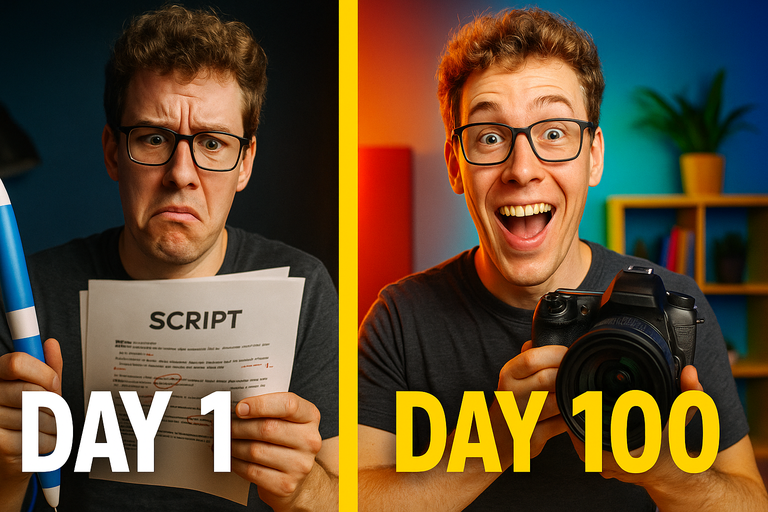- Posted on

Ever looked at a photograph and felt chills—not from what you saw, but from what you felt? That split-second reaction, that whisper of a story your brain fills in, is the magic of subtle narrative. But what if I told you that screenwriters can harness this same magic, making scripts pulse with the life of the unseen? Grab your metaphorical camera, because today, we’re diving deep into what photographers know about storytelling—and how you can use these secrets to transform your writing.
You might be thinking: "Wait, isn’t photography about images and screenwriting about words?" Trust me, the gap between them is where some of the greatest storytelling breakthroughs live.
The Inspiration: Mastering Subtle Narratives in Photography
I recently read a thought-provoking piece called "Seeing Stories: Mastering Subtle Narratives in Photography". It tackles a common struggle for visual storytellers: Is this picture really meaningful, or am I just overthinking it? The article explores how the greatest photographers imbue every shot with unspoken stories—through details, mood, and composition—sometimes without their viewers even realizing it.
Now, here’s the juicy bit: these same principles apply to screenwriting. Too often, writers hammer their points home, afraid the audience won’t "get it." But sometimes, your script’s real power lies not in what’s said, but in what’s left unsaid. It’s in the subtle, the suggested, the almost invisible.
So, let’s open the aperture—what do photographers do that every screenwriter should steal? Read on for five lessons that might just change the way you write forever.
1. The Power of the Unseen: Trust Your Audience
Photographers often leave space in their images—letting you, the viewer, fill in the blanks. In screenwriting, less is more can be a superpower. Instead of spelling everything out, trust that a well-placed silence, a look, or a lingering shot can say more than a monologue ever could.
- Try this: Next time you write a scene, ask yourself: What happens if I cut the dialogue in half? What lingers in the silence?
2. Details Create Worlds—But Only the Right Ones
A good photo is obsessed with details: a chipped teacup, the curve of a shadow, the way light falls at dusk. As a writer, zoom in on the right details. One perfectly chosen object or gesture can reveal more about a character than pages of backstory.
- Open Loop: Think of the most vivid scene you’ve ever seen in a movie—was it the explosion or the quiet way a character buttoned their coat before walking out? We’ll come back to why this works in a moment.
3. Framing Changes Everything
What’s inside the frame matters, but so does what’s left outside. Photographers decide what to include; so should you. When you frame a scene in your script, what’s missing is often as important as what’s present. What lies just out of sight can drive curiosity and keep your audience leaning in.
- Actionable Hack: Play with entrances and exits. Start a scene after the argument. End it before the answer. Let the reader yearn for the missing pieces.
4. Mood Over Exposition
Lighting, color, and shadows don’t just make a beautiful photo—they create an emotional palette. Instead of telling your audience how to feel, let the setting, the weather, or the background noise do the heavy lifting. The unspoken atmosphere in a script can be a silent character all its own.
- Pro tip: Before you start a scene, write one line on how you want the reader to feel. Then use only actions, not explanation, to evoke it.
5. The “Moment Between Moments” Is Where the Truth Hides
The best photographs capture not the obvious, but what flickers in-between—the quick glance, the pause before a word, the aftermath of a touch. These are the moments that resonate. They are the stillness between the chaos, and they’re where scripts move from good to unforgettable.
- Try this exercise: Rewrite a key scene from your script, focusing only on what happens after the action. What’s left hanging in the air?
Why Subtlety Matters Now, More Than Ever
In our era of endless content, attention spans are short, and the obvious is quickly forgotten. What lingers? The subtle, the ambiguous, the scene that leaves people talking, arguing, remembering. Industry leaders from all corners are urging a return to show, don’t tell—and it’s never felt so vital.
That’s why communities like The Infinite Dude Media’s creative hub are so important right now. They nurture the next wave of visual and narrative storytellers, encouraging you to experiment, collaborate, and push boundaries—whether you’re holding a camera or a keyboard.
Your Turn: Start Seeing—And Writing—Stories Differently
So, what will you do with this inspiration? Will you dare to leave more unsaid, to trust your audience, to write not the obvious but the in-between? The next time you craft a scene, pause and ask: What’s the photograph hidden inside this moment?
If you’re looking for a tribe that gets it—from subtlety to spectacle—join ScriptSync’s vibrant community, or explore the resources at The Infinite Dude Media. Seriously, your next breakthrough might be a single frame (or line) away.
What’s the most powerful moment you’ve ever experienced in a film or script—one that said everything by saying almost nothing? Drop it in the comments!